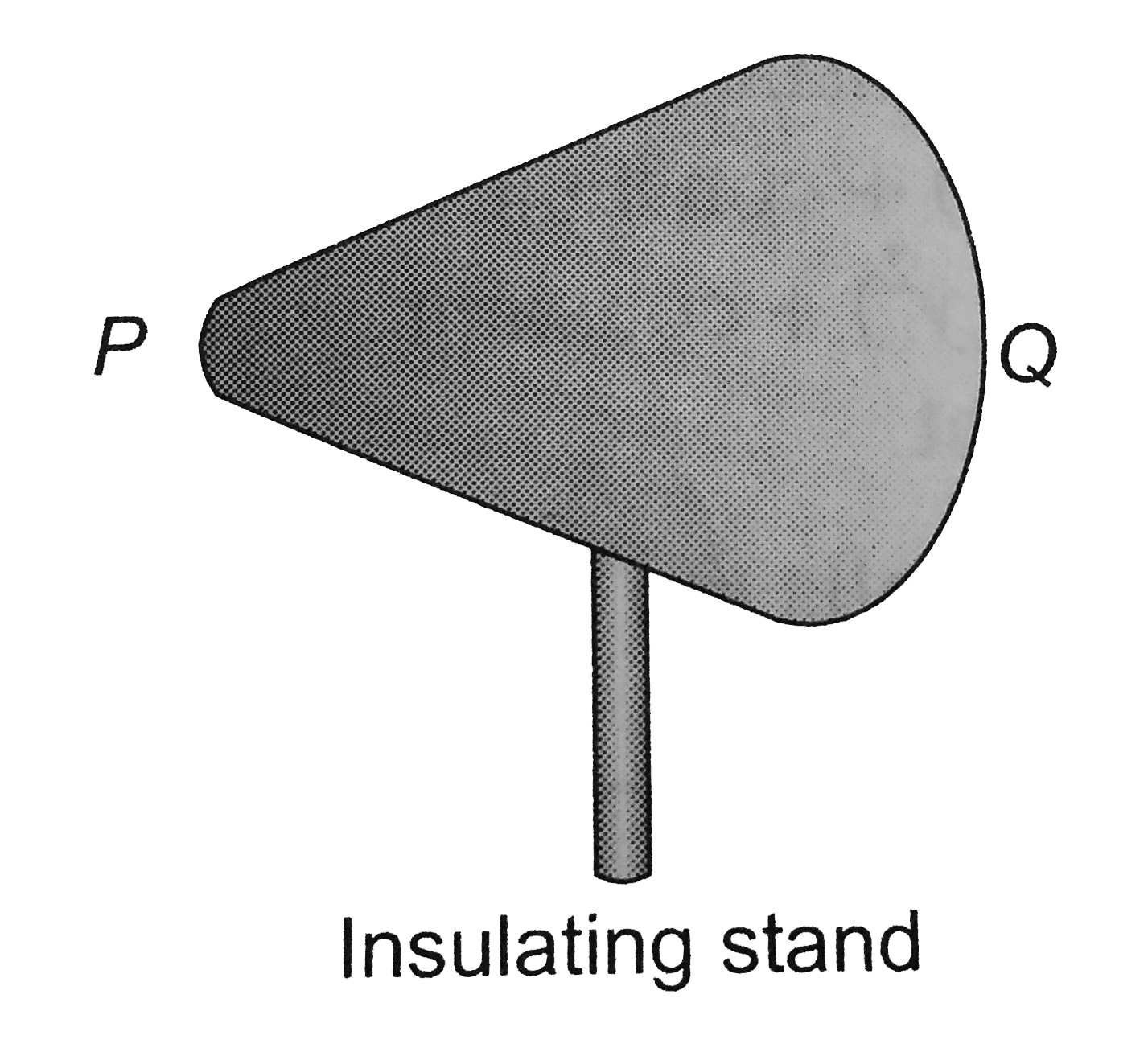A point charge q moves unifromly and rectilnearly with a relativistic with a relativistic velocity of light (β=v/c). Find the electric field strength E produced by the charge at the point whose radius vector relatives to the charge is equal to r and forms an angle θ with its velocity vector.
Suppose the charge q moves in the positive direction of the x-axis of the frame K. Let us go over to the moving frame K', at whose origin the charge is at rest. We take the x and x' axes of the two frames to be coincident, and the y&y' axes, to be parallel.
In the K' frame, →E=14πε0q→rr3,
and this has the following components,
E'x=14πε0qx'r'3,E'y=14πε0qy'r'3
Now let us go back to the frame K. At the moment, when the origins of the two frames coincide, we take t=0. Then,
x=rcosθ=x'√1−v2c2,y=rsinθ=y'
Also, E'x=E'x,Ey=E'y/√1−v2/c2
Form these equations, r'2=r2(1−β2sin2θ)1−β2
→E=q4πε01r3(1−β2sin2θ)3/2[(1−β2)3/2(x'ˆi+y'√1−β2ˆj)]
=q→r(1−β2)4πε0r3(1−β2sin2θ)3/2
Topper's Solved these Questions
- BOOK - IE IRODOV, LA SENA & SS KROTOVCHAPTER - ELECTRODYNAMICSEXERCISE - Motion Of Charged Particle In Magnetic Field36videos
ELECTRODYNAMICS
- BOOK - IE IRODOV, LA SENA & SS KROTOVCHAPTER - ELECTRODYNAMICSEXERCISE - Constant Magnetic Fiels - Magnetics69videos
ELECTRODYNAMICS
- BOOK - IE IRODOV, LA SENA & SS KROTOVCHAPTER - ELECTRICITY AND MAGNETISMEXERCISE - All Questions6videos
ELECTRICITY AND MAGNETISM
- BOOK - IE IRODOV, LA SENA & SS KROTOVCHAPTER - ELECTROMAGNETISMEXERCISE - All Questions24videos
ELECTROMAGNETISM
Similar Questions
A non-relativistic point charge q moves with a constant velocity v. Using the field transformation formula. Find the magnetic induction B produced by this charge at the point whose position relative to the charge is determind by the radius vector r.
View SolutionFind the electric field strength vector if the potentail of this field has the form φ=ar, where is a constatn vector, and r is the radius vector of point of the field.
View SolutionA point charge q moves with a non-relativestic velocity v = const. Applying the theorem for the circulation of the vector H around the dotted circle shown in Fig, H at the point A as a function of a radius vector r and velocity v of the charge.
 View Solution
View SolutionFind the electric field strength vector at the centre of a ball of raiduius R with volume charge density ρ⇒ar, where a is a constant vector, and r is a radius vector drawn from the ball's centre.
View SolutionA positive point charge 50μC is located in the plane xy at the point with radius vector r0=2i+3j, where I and j are the unit vectors of the x and y axes. Find the vector of the electric field strength E and its magnitude ath the point with radius vector r=8i−5j. Here r0 and r are expressed in metres.
View SolutionA point charge q is located at the centre fo a thin ring of radius R with uniformly distributed charge −q, find the magnitude of the electric field strength vectro at the point lying on the axis of the ring at a distance x from its centre, if x>>R.
View SolutionA point charge q is located at the centre fo a thin ring of radius R with uniformly distributed charge −q, find the magnitude of the electric field strength vectro at the point lying on the axis of the ring at a distance x from its centre, if x>>R.
View SolutionA shpere of radius r carries a surface charge a density σ=ar, where a is a constant, vector and r is radius vector of a point of the sphere ralative to its centre. Find the electric field strength vector at the centre relative at the centrre of the sphere.
View SolutionDerive an expression for the strength of electric field intensity at a point on the axis of a uniformly charged circular coil of radius R carrying charge Q.
View SolutionFigure shown a charged conductor resting on an insulating stand. If at the point P the charge density is σ, the potential is V and the electric field strength is E, what are the values of these quantities at point Q ?
 View Solution
View Solution

